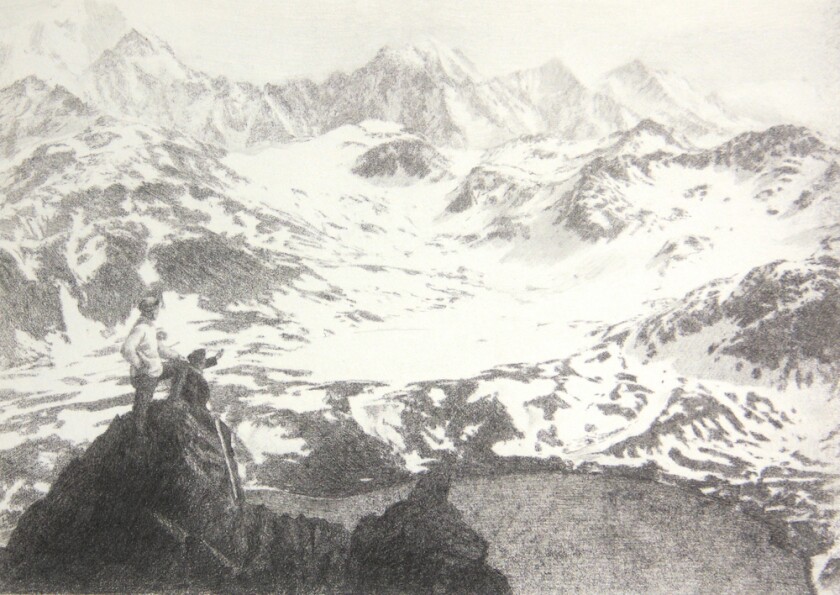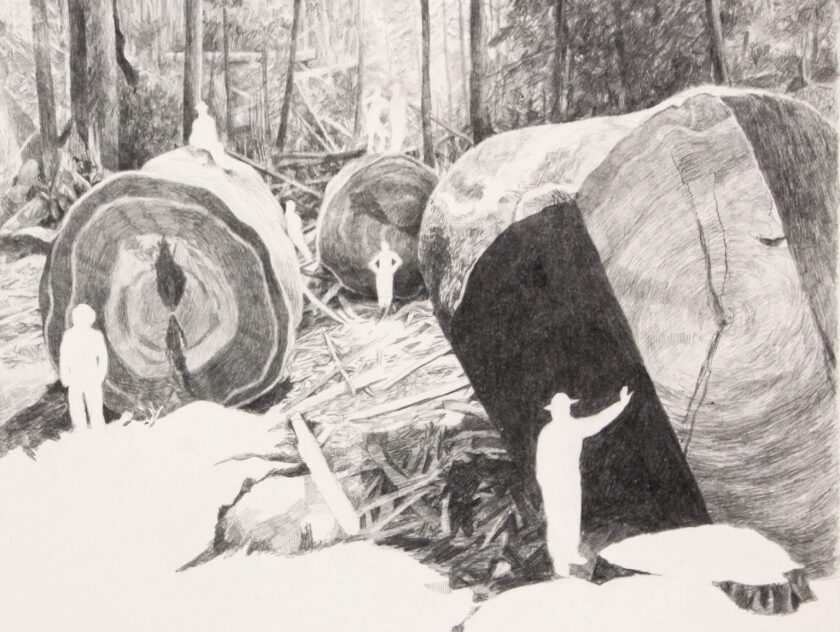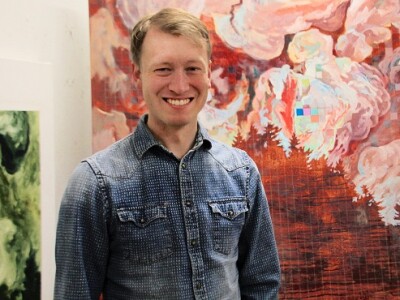For artist Linn, drawing is more than a preparatory skill; it is a meditative state of mind and a process of trying to slow down time
Ron Linn is a multidisciplinary artist whose work is primarily rooted in drawing. Early in his art training he considered drawing a preparatory skill — a prelude to something more polished. But in graduate school, Linn came to regard drawing as his home base.
“In grad school I realized that drawing was an intense act of looking and thinking while I was doing something with my hands,” Linn said. “There’s this connection between my mind, my eyes and my hands. I really enjoyed that connection and began discovering drawing as a means in itself, as a way of connecting to this state of mind.”

Linn seeks to help students in his introductory drawing courses develop this skill of heightened observation that he says will help them improve in whatever they’re doing, whether art or something else.
“Just being able to look at something and see it simply for what it is, and understand it in a new way without just consuming it,” Linn said.
A Performative State
Linn’s attitudes toward drawing trace back to a project he began as a first-year MFA student at the University of Oregon and continued through his second year of the program. On a long roll of paper, Linn started drawing intertwining silhouettes that resembled a map of rivers. He drew the forms intuitively, not referencing any particular place, and returned to this practice whenever he was seeking clarity or direction.
“It was just this long, slow process,” Linn recalled. “I began thinking of drawing as a sort of sympathetic magic or simultaneous experience where my pencil moves across the paper, and tracing these forms could almost be like me walking a path and discovering what is in front of me.”
For Linn, drawing is a process of trying to slow down time or revisit a specific moment, or perhaps even access a time that he never actually experienced. It is this process or performative state that contains the artwork. The result is more like an artifact — a remnant of an artwork that for Linn was really meaningful.
“Fluvial Knot” was one of the first experiences where Linn was thinking about how to synthesize the finished product and the act of making the work itself. The project culminated in an exhibition where drawing paper was stretched across a table with a roller and extended up the wall. Throughout the week it was shown, Linn visited the gallery for several hours at a time to continue drawing.

Landscape and Language
When Linn moved from Oregon to Utah for college, he didn’t like the openness of the sky. Utah’s desert landscape felt foreign to him, and he longed for the trees and ocean of the Pacific Northwest. Eventually Linn noticed that when he was home in Oregon, he missed the mountains that loom over BYU campus and spread along the Wasatch Front, and he missed the dry brown of the desert. Linn set out to bridge the gap he felt so that he could experience both places concurrently.

“I began thinking a lot more about landscape and language,” Linn said. “Specifically, how we talk about landscape, the stories we tell about landscape and how stories influence the way that we see landscape or experience a place.” Linn chose to return to Oregon for an MFA in painting and drawing, in part because of his connection to the familiar landscape. As a graduate student he completed two residencies — a weeklong artist retreat through the Portland-based Signal Fire, an organization that connects artists to the natural world, and a two-month long residency in Skagaströnd, Iceland.
Walking and Noticing
Complementary to Linn’s art is walking outside. He described walking as a space that mirrors his thinking when he makes art really well, but that he can experience without the pressure of having to make anything. Walking and noticing allows Linn to experience the world in a mindful way. “We’re so bombarded by having to live quick lives, where we’re constantly moving around and focusing on multiple things at a time,” Linn said. “The slowness of drawing and the slowness of walking have paired really nicely for me.”
Recent Projects
Linn’s recent paintings and drawings explore the stories we tell ourselves about the landscape and our role in it, and how those have complicated our relationships to both forest and fire management. This body of work was spurred by the Eagle Creek Fire in the Columbia River Gorge in Oregon in 2018. Linn, who often sought refuge in the gorge over the years and was living in Utah at the time of the fire, was devastated by the damage.
To help process his grief — and to place it in a larger context of natural cycles of upheaval and change — Linn began making drawings. One approach includes sourcing imagery from old photographs of the logging industry and then translating the photographs through the lens of drawing, while also removing, distorting or altering information. Work from this series will be featured in an upcoming show, “Followed Fires,” at the Bountiful Davis Art Center in Bountiful, Utah.

Together with other Art Department alumni, Linn recently founded the PARC Collective, a nomadic Utah-based art collective that responds to ideas and issues of our shared time and place. They curated their first show about displacement in Provo in December 2019. Following the onset of the COVID-19 crisis, PARC created a social media-driven online exhibition of work created during isolation, called "Incubation Period." In collaboration with Granary Arts — a contemporary art center in Ephraim, Utah — "Incubation Period" has created an archived record of quarantine's effects on community and creative practices, which will reside on their Instagram account and website, and in a future publication by Granary Arts.
